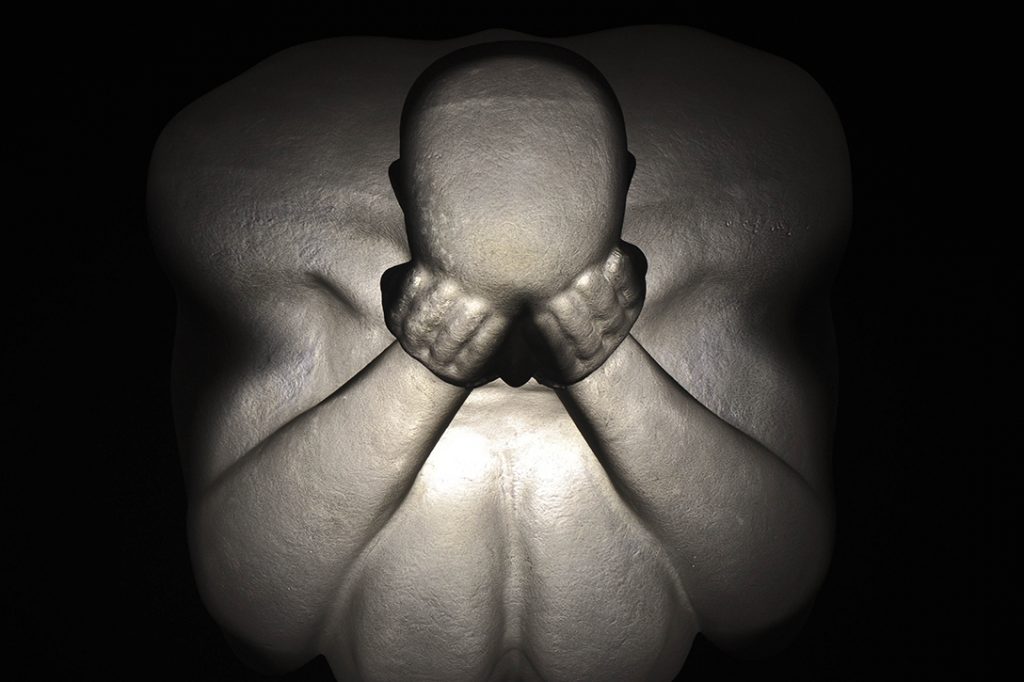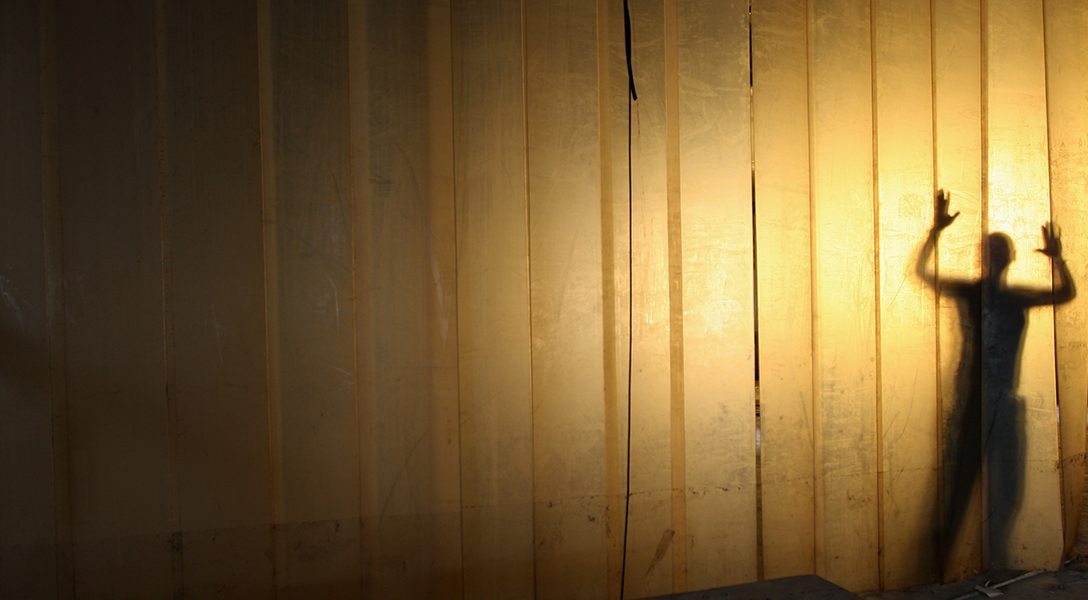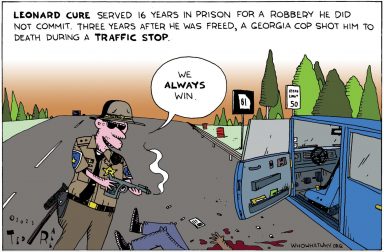Male victims of domestic abuse don’t always seek help. When they do, they are often excluded from government-funded services, despite laws mandating equal protection. Some advocates are fighting to change that.
Battered men desperately sought help for years in California, but their efforts consistently fell on deaf ears. It took four battered men and a 2008 lawsuit by the National Coalition for Men for the California Supreme Court to recognize that men are entitled to equal protection and advocacy support from domestic violence shelters.
Domestic violence accounts for a surprising proportion of violent crime in the United States. Close to one in six murder victims is killed by an intimate partner. Nearly three-fourths of all murder-suicides involve an intimate partner.
Because 85% of domestic-assault victims are women, when people think about domestic violence they tend to assume a male abuser and a female victim. Yet a surprising number of men are victims of domestic abuse, although not always at the hands of a female partner.
In fact, cases of domestic violence show a similar profile, regardless of gender, age, ethnicity, or financial or educational background. For example, professional success does not inoculate a person against this crime, either as victim or perpetrator: Saturday Night Live’s Phil Hartman was murdered by his wife as he slept. A few days into 2017, Chris Corley (R), a South Carolina Congressman, was indicted on felony domestic-violence charges.
Still, some demographics among the victims of domestic violence — such as LGBTQ individuals or the religiously observant — need special attention. Perhaps the largest and neediest of these groups is men.
According to the Centers for Disease Control and Prevention (CDC), more than one in four men (28.5%) in the United States have experienced rape, physical violence and/or stalking by an intimate partner. Also, one in seven men have been victims of severe physical violence by an intimate partner.
Further, the American Psychological Association says two in five gay or bisexual men will experience intimate partner violence in their lifetimes.
Despite the data, many people remain unaware or unsympathetic to the reality that men are often victims of abuse at home.
When Family Violence Prevention Inc., a Batesville, Arkansas, domestic violence agency, received a gift of a three-bedroom house and an acre of land, Patty Duncan, the organization’s Executive Director, went to her board. Duncan told the members that what she really wanted to do was turn the house into a dedicated domestic violence shelter for men.
“Several of my board members asked, ‘Are men really victims?’ ” Duncan told WhoWhatWhy. “I was a little taken aback. But we had conversations. I’d say, ‘What’s the difference when a woman slaps a man?’ They’d say, ‘I’ve never looked at it like that.’ It’s time to think things differently … the light bulb clicked.”
It is interesting that despite a board comprised of people invested in helping domestic violence victims, some of them were not aware that men can suffer from abuse, themselves. It begs the question: If they didn’t know, who would?
Duncan is a domestic violence survivor herself.
“You’re a survivor if they have not killed you,” she said.
She noted that her agency uses the term “abused,” rather than “battered,” because the latter clearly implies physical assault, whereas abuse may be mental, financial or sexual.
But what if providers of domestic-violence services know all this, yet fail to act on it?
In 2008, the National Coalition for Men won a landmark appellate case in California (Shewry v. Woods) which held that it is unconstitutional to exclude male victims of domestic violence from statutory funding provisions or from state-funded services. The court found:
The gender classifications in Health and Safety Code section 124250 and Penal Code section 13823.15, that provide state funding of domestic violence programs that offer services only to women and their children, but not to men, violate equal protection.
The California Battered Women Protection Act of 1994 established funding for domestic violence shelters and the services they provided. Because domestic violence was defined as a crime only women experience, however, the statute excluded male victims, who were therefore denied state-funded services such as shelter, counseling, and legal help.
One of the plaintiffs in this case, David Woods, tried over the years to obtain help. He was told repeatedly by the Sacramento domestic violence agency that “we don’t help men.” He was also told that men are batterers, not victims. Three other plaintiffs in the case reported being given the same reasons for denial of services.
Woods and the other California plaintiffs were not alone, according to a 2008 National Institute of Mental Health-funded study of men who suffered violence at the hands of their female partners and sought help.
The study, conducted by Drs. Denise A. Hines and Emily M. Douglas of Clark University, rated — on a scale of 1-100 — how helpful agencies, institutions and individual medical and health-care professionals were to battered men. As reported by the victims themselves, domestic violence hotlines ranked dead-last. Domestic violence agencies came in just slightly better, at about the same level as the local police.

Photo credit: Katy Wrathall / Flickr (CC BY-NC-ND 2.0)
That was 2008. Are things better now?
The Violence Against Women Reauthorization Act of 2013, signed by President Barack Obama on March 7, 2013, explicitly forbade domestic violence agencies that receive federal funds to exclude men from their services.
The new rules even stipulated that if an agency’s battered-person shelter cannot accommodate men along with women, then the agency must find comparable shelter services for men elsewhere — or risk losing its federal funding.
Could that happen? Absolutely. Will that happen? Unlikely.
Besides the federal government, many states now mandate equal protection. But it costs money to bring court suits.
Philip C. Cook, author of “Abused Men: The Hidden Side of Domestic Violence,” told WhoWhatWhy that what is really needed is up-to-date information on compliance nationwide.
Today, much of the information about discrimination is anecdotal; surveys (such as the one suggested by Cook) take time and staff and money, all of which are in short supply.
Stop Abuse For Everyone (SAFE), an organization focused on providing services to underserved victims, does collect information from callers who seek help, in an attempt to pinpoint which agencies across the country were helpful — and which were not. But conversations with call-in clients can hardly produce the reliable, comprehensive database that a targeted, scientific survey would provide.
The policy in many shelters of excluding all males turns out to be discriminatory against another group of innocent victims.
“Looking at the National Domestic Violence Hotline survey of shelters, I find a significant number of them state that an abused woman cannot bring male children over the age of 12 with her to the shelter,” Cook said. “Indeed, it is likely that there are more shelters with that kind of policy than there are shelters who will accept gay or heterosexual men. Thus, gender discrimination hurts everyone, including mothers with teenage boys.”
Not a lot of people know this about shelters, according to Dianna Thompson, SAFE Executive Director:
“It is shocking that you’re pretty much out in the cold if you have a son,” Thompson said. “How is that helpful? And that boy is a victim, too — he’s been witnessing the violence. You’re excluding someone just because he is male? It’s wrong.”
Thompson has received letters from female domestic-violence victims who haven’t been able to escape from their abuser because they have a son who is not welcome in a shelter.
This is not to indict all domestic violence shelters or all domestic violence advocates. Many domestic violence advocates understand that this is an “ecumenical” crime, in that men and women, gay and straight and transgender, can be either abusers or victims.
The Maryland Network Against Domestic Violence just received a Victims of Crime Act grant to look at a range of underserved individuals — including undocumented, illegal immigrants, persons with disabilities, teens, older adults, and men.
“You have to make the extra effort and work in partnership with others in the community to try to reach out,” said Michaele Cohen, MMADV’s executive director.
She acknowledged that many male victims remain hidden.
“In mandated reporting, agencies will report they have served male victims. That the [victims themselves] don’t come forward, though, doesn’t mean they aren’t in need.”
At the same time, Cohen warned against efforts to imply that men are as likely to suffer domestic abuse as women — something not supported by any data.
She said that from time to time she gets calls from reporters who seem to view male victims of domestic abuse as the next “new” thing. If she feels that their interest is in putting forward the notion that “it’s all equal,” she does not talk to them.
Cameka Crawford, chief communications officer for the National Domestic Violence Hotline, said that everyone answering calls at her agency has been taught that “domestic violence does not discriminate.” Last year, of the more than 300,000 calls to the Hotline, 7.5% were identified as male victims.
“Even though we are seeing some signs that things are changing,” Crawford said, “we culturally cling to very rigid gender definitions: young men are taught they have to be tough, be a man, not express their emotions, which can be incredibly harmful to young boys as they grow, especially if they find themselves in an abusive relationship. This can keep a male victim from coming forward.”
Advocates cite numerous other reasons that might prevent a male victim from seeking help.
Men are frequently embarrassed, ashamed of being seen as emasculated, a wimp.
“They think nobody will listen to them, and will instead think — ‘Who will believe my little tiny 90-pound wife is abusing me?’ ” Thompson said.
If they are in a same sex relationship, they are afraid to come seek help, because it might mean coming out before they are ready to.
“This is a community that already suffers from prejudice,” MMADV’s Cohen said.
Lack of options and resources are also problems. Some programs without access to shelter that admit males will put a man in a hotel.
“How safe is that?,” Duncan asked. “What kind of advocacy are they getting there? Who talks with them about their goals, fears, struggles, barriers?”
Thompson’s SAFE website provides resources and statistics for people to use when in abusive situations. The group has also created a national directory of services that includes shelters where they are “pretty confident” that men will be admitted. But even with the gender-inclusive provisions in the 2013 law, SAFE consistently hears from males and LGBT individuals about not being admitted to a shelter.
“It’s hard to imagine,” Thompson said, “going for help and then being turned down.”
Domestic violence is often characterized as violence behind closed doors. While this is largely true, “closed doors” is also a metaphor for hiding the violent relationship from everyone on the outside.
“I don’t know any woman who shouted it from the rooftops,” Cook said. “Part of the syndrome is hiding it. The only difference is … no one asks men. If they are asked, they will tell.”
First Registered, Dedicated Shelter for Battered Men
.
In the late 1970s, there were three shelters for battered women in the United States. Today there are hundreds. The first — and so far only — registered, dedicated shelter for battered men in the country opened in 2016 in Batesville, Arkansas.
The Taylor House Domestic Violence Shelter for Men was established by Patty Duncan’s Family Violence Prevention Inc.
Initially, Duncan’s group had been housing men in their sole safe-haven shelter. Two rooms had bathrooms in them, so men stayed there. Otherwise, they participated in classes, outreach and case management. “We were as inclusive as we could be,” Duncan said.
But over time she wondered: Would she ever ask a woman to be in a shelter run and occupied entirely by men?
So when the Taylor family offered the house and land, she wasn’t sure what she would do with it. But “nonprofits do not turn down a free home and a piece of land,” Duncan explained. Initially she worried about the move, but then put her mind at ease because, while her organization’s purpose is to empower and educate victims, the number one goal is to get them safe.
The National Hotline’s Crawford has a direct message: “If you are a male in an abusive relationship, you’re not alone. We believe you, and the Hotline is available 24 hours a day, 7 days a week to meet you where you are in your relationship. We can help you create a safety plan.”
Every advocate interviewed stressed the need to change the culture, change the way the average person thinks about interpersonal violence.
The way to do that, Crawford said, is to “break the myth of what manhood is. We must continue to have conversations, like when there are images of a man being attacked, it’s not funny. The same way we speak out against women being abused, we need to speak out against men being abused.”
Duncan echoed this.
“If it’s not okay for one gender, it shouldn’t be ok for another gender.”
Cook noted that society needs to devise effective, proven programs that will help all children — from elementary through high school — develop constructive and supportive relationships, because 90% of those who engage in intimate partner violence come from a family in which they witnessed or experienced it. This is learned behavior, Cook and others say. To fight it, teach something different.
“As equity permeates society,” Cook said, “that means equality of bad as well as good. Attitudes are changing, and we should be protective of both [genders].”
Said Duncan: “A victim is a victim, regardless of their identity.”
Postscript:
.
What is abuse? Domestic violence advocates usually provide a “laundry list” of actions that constitute abuse. In the early years of advocacy, they did not do that, with the result that victims often did not self-identify. The following list is from the National Coalition Against Domestic Violence:
Does your partner …
• Embarrass or make fun of you in front of friends or family? Put down your accomplishments or goals?
• Make you feel like you are unable to make decisions? Use intimidation or threats to gain compliance?
• Tell you that you are nothing without them?
• Treat you roughly — grab, push, pinch, shove or hit you? Threaten or abuse your pets?
• Call you several times a night or show up to make sure you are where you said you would be?
• Use drugs or alcohol as an excuse for saying hurtful things or abusing you?
• Blame you for how they feel or act?
• Pressure you sexually for things you aren’t ready for?
• Make you feel like there “is no way out” of the relationship?
• Prevent you from doing things you want, like spending time with your friends or family?
• Try to keep you from leaving after a fight, or leave you somewhere after a fight to “teach you a lesson?”
Related front page panorama photo credit: Adapted by WhoWhatWhy from statues (Bjørn Smestad / Flickr – CC BY-NC-SA 2.0).

